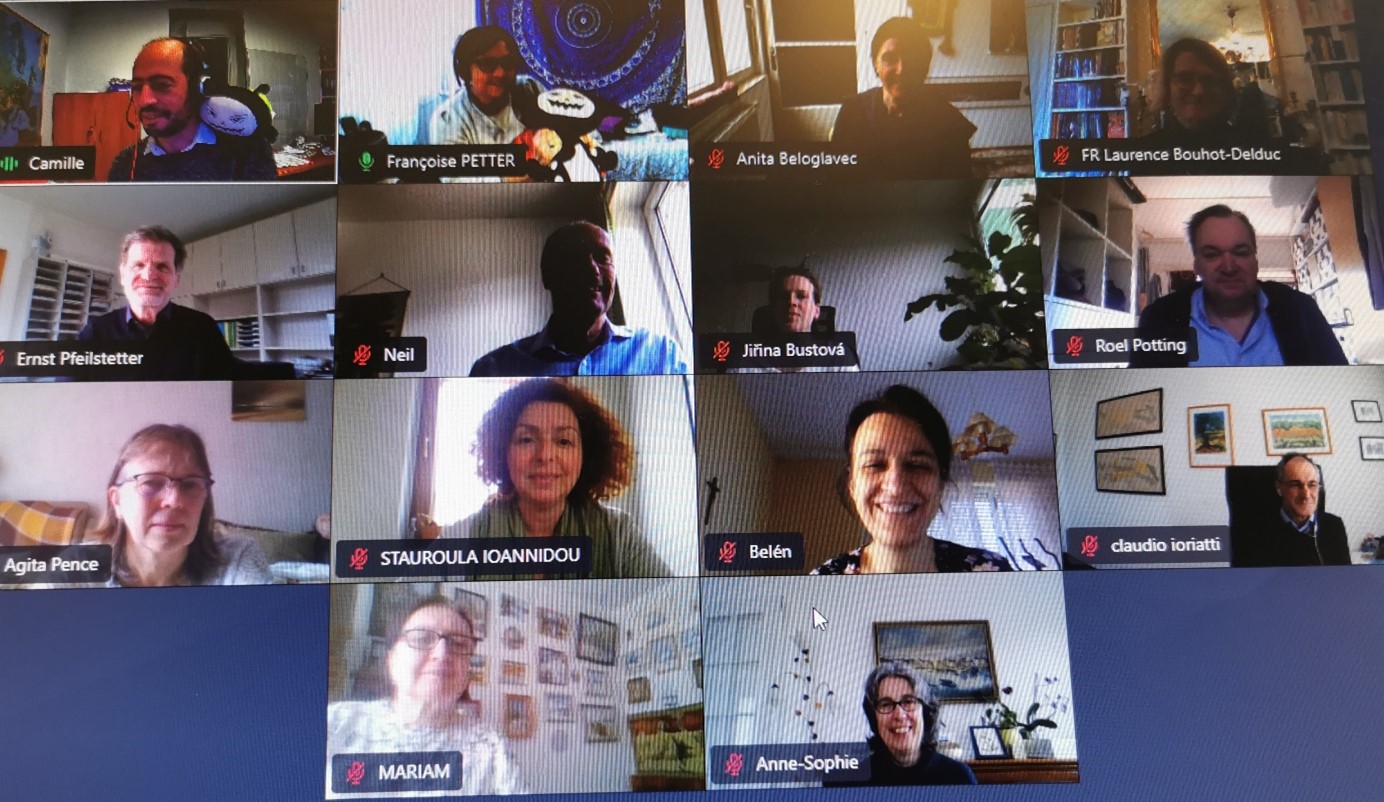
63rd and 64th Meetings of the Panel on Phytosanitary Measures
Teleconference, 2021-04-14/16
Teleconference, 2021-05-17 (extra meeting)
Due to the COVID-19 situation, the Panel met by videoconference on 2021-04-14/16 (regular meeting) and 2021-05-17 (extra meeting). The main task of this Panel is to evaluate risks presented by specific pests and design phytosanitary measures to avoid their introduction and spread.

EPPO Lists of pests recommended for regulation
The Panel reviewed in detail PRAs prepared by the Expert Working Groups (EWGs) for PRA to agree on phytosanitary measures to be recommended for the pests concerned. The Panel recommended to the Working Party on Phytosanitary Regulations the addition of the following pests to the EPPO A1 List:
- Chrysobothris femorata and C. mali (Coleoptera: Buprestidae)
- Orgyia leucostigma (Lepidoptera: Erebidae)
Following recent progress in taxonomy, the Panel recommended that:
- Citrus tatter leaf virus is withdrawn from the EPPO A1 List (now regarded as belonging to a single species i.e. Apple stem grooving virus)
- Blueberry leaf mottle virus is moved from the EPPO A2 to the A1 List (past records from European countries are now considered as ‘invalid records’)
- Xanthomonas citri pv. fuscans is reinstated on the A2 List.
The Panel noted that Aromia bungii is now under containment in certain areas in Italy and Germany and therefore recommended that it is transferred from the EPPO A1 to the A2 List. Contact will be made with NPPOs to obtain more information about whether eradication measures are implemented on ‘Candidatus Phytoplasma phoenicum’ in Italy and Spodoptera frugiperda in Israel and Jordan, as well as to confirm the request to move to a containment strategy for Anoplophora glabripennis in the Marche region (Italy).
The Panel developed a discussion paper on the listing of pests below the species level, to be presented to the Working Party. A PRA report was prepared for Citrus bark cracking viroid to better formalize the measures recommended in the EPPO region.
Alert List
The Panel reviewed the EPPO Alert List ![]() (the purpose of this List is to warn countries about possible new risks, and in certain cases to propose candidates for PRA and, if relevant, recommend them for regulation). Considering that the alert had been given, the Panel recommended deletion of Curtobacterium flaccumfaciens pv. poinsettiae (Actinomycetales: Microbacteriaceae), Neodiprion abietis (Hymenoptera: Diprionidae), Neonectria neomacrospora (Hypocreales: Nectriaceae), Xylosandrus crassiusculus (Coleoptera: Scolytidae) and its associated fungi. The Panel also recommended deletion of Saperda tridentata (Coleoptera: Cerambycidae) based on an EFSA risk assessment extrapolated to the EPPO region. Emerging pests and diseases suggested for addition by the Panel (e.g. Phlyctinus xerophilus, Spodoptera praefica) were briefly discussed.
(the purpose of this List is to warn countries about possible new risks, and in certain cases to propose candidates for PRA and, if relevant, recommend them for regulation). Considering that the alert had been given, the Panel recommended deletion of Curtobacterium flaccumfaciens pv. poinsettiae (Actinomycetales: Microbacteriaceae), Neodiprion abietis (Hymenoptera: Diprionidae), Neonectria neomacrospora (Hypocreales: Nectriaceae), Xylosandrus crassiusculus (Coleoptera: Scolytidae) and its associated fungi. The Panel also recommended deletion of Saperda tridentata (Coleoptera: Cerambycidae) based on an EFSA risk assessment extrapolated to the EPPO region. Emerging pests and diseases suggested for addition by the Panel (e.g. Phlyctinus xerophilus, Spodoptera praefica) were briefly discussed.
Pest Risk Analysis
The selection of priorities for the organization of EWGs for PRA for the year to come was organized via an online survey. As in the face-to-face meetings, the selection was made taking into account the following elements: geographical distribution, importance of the crop(s) concerned, risk of natural spread into the region or for further spread within the region, potential pathways, economic impact, environmental impact, possibilities of control, similarities to other known cases, availability and validity of data. The three highest priorities for PRA identified by the Panel were Dendroctonus valens (Coleoptera: Scolytidae), Tomato mottle mosaic virus and Tetranychus mexicanus (Acari: Tetranychidae). The next priorities include Agrilus mali and beech leaf disease. For this disease, there were divergent opinions on whether sufficient data would be available to support the drafting of an EPPO PRA. The Panel recommended to alert countries which do not have already measures in place via a statement by the Working Party to the Council.
The priorities for an EPPO PRA and the additional topics to be discussed in an EWG this year will be discussed by the Working Party.
Revision of the guidance document on PM 5/5 Decision-support scheme for an express Pest Risk Analysis was presented to the Panel. Revised guidance to review national PRA as well as guidance for pest free place/site of production and pest freedom of the crop in EPPO PRAs were approved by the Panel.
Standards
The Panel commented on the new version of the draft PM 5/XX Guidelines on the design and implementation of a buffer zone following an EWG which was held to test the Expert Knowledge Elicitation process and after country consultation. The Panel agreed that the draft Standard can be presented to the Working Party. The PRAs for thousand cankers disease and H. irregulare were revised with the outcome of the EKE.
The Panel also agreed on the deletion of ‘complete’ from title for PM 5/8 Guidelines on the phytosanitary measure ‘Plants grown under complete physical isolation’ and with resulting changes in the main text. This would prevent understanding that production must be performed under a completely isolated structure.
Based on the outcome of an EWG, the Panel recommended that revision of PM 3/66 Guidelines for the management of plant health risks of biowaste of plant origin is added to the work programme for 2022.
The Secretariat has compiled in an Excel file the phytosanitary measures recommended in EPPO in the framework of EPPO PRAs prepared by EWGs, national PRAs whose measures were endorsed by EPPO and Standards PM8 Commodity-specific phytosanitary measures. This allowed inconsistencies to be identified within or between PRAs. Therefore, PRA documents were amended.
The next Panel meeting is planned for 2021-10 in Greece.
